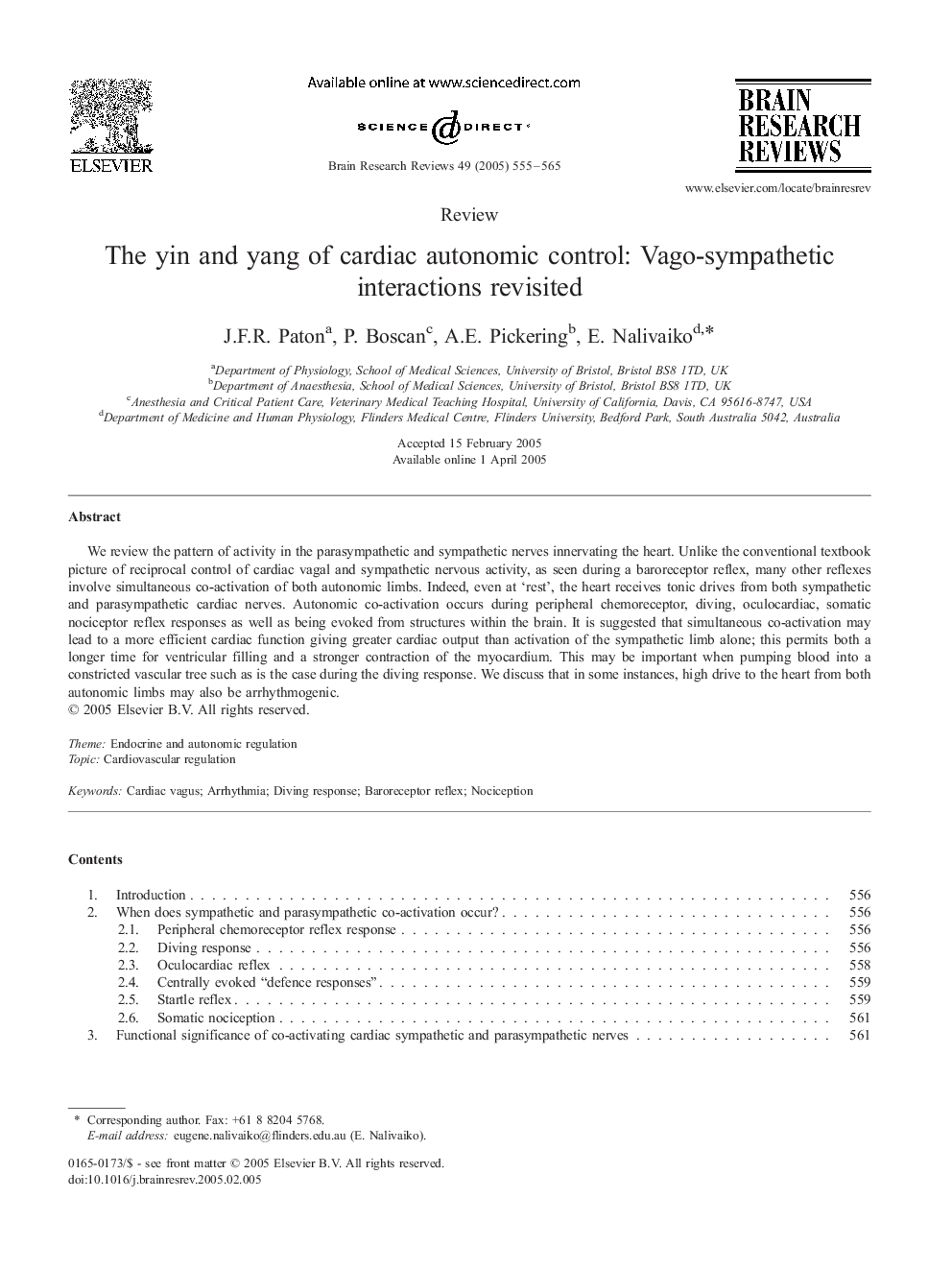| Article ID | Journal | Published Year | Pages | File Type |
|---|---|---|---|---|
| 9423029 | Brain Research Reviews | 2005 | 11 Pages |
Abstract
We review the pattern of activity in the parasympathetic and sympathetic nerves innervating the heart. Unlike the conventional textbook picture of reciprocal control of cardiac vagal and sympathetic nervous activity, as seen during a baroreceptor reflex, many other reflexes involve simultaneous co-activation of both autonomic limbs. Indeed, even at 'rest', the heart receives tonic drives from both sympathetic and parasympathetic cardiac nerves. Autonomic co-activation occurs during peripheral chemoreceptor, diving, oculocardiac, somatic nociceptor reflex responses as well as being evoked from structures within the brain. It is suggested that simultaneous co-activation may lead to a more efficient cardiac function giving greater cardiac output than activation of the sympathetic limb alone; this permits both a longer time for ventricular filling and a stronger contraction of the myocardium. This may be important when pumping blood into a constricted vascular tree such as is the case during the diving response. We discuss that in some instances, high drive to the heart from both autonomic limbs may also be arrhythmogenic.
Keywords
Related Topics
Life Sciences
Neuroscience
Neuroscience (General)
Authors
J.F.R. Paton, P. Boscan, A.E. Pickering, E. Nalivaiko,
